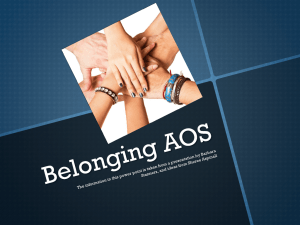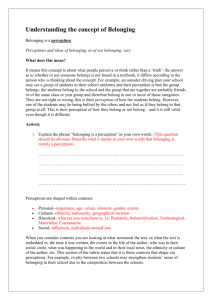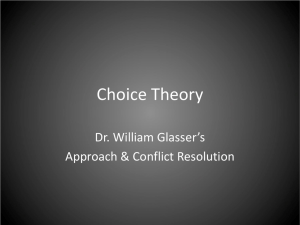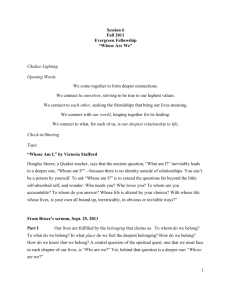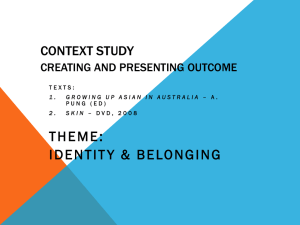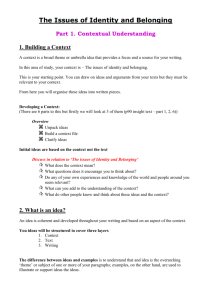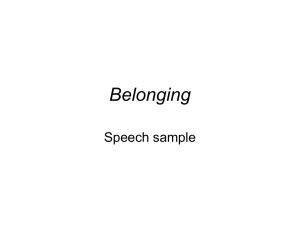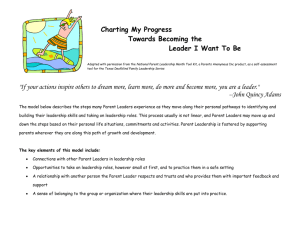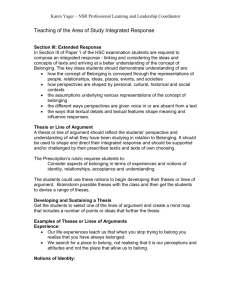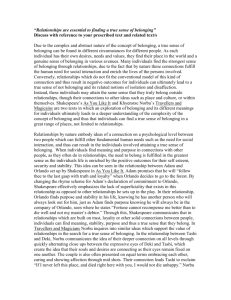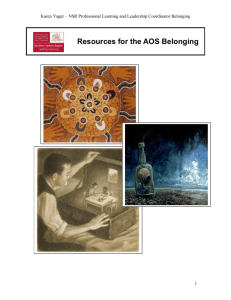File
advertisement
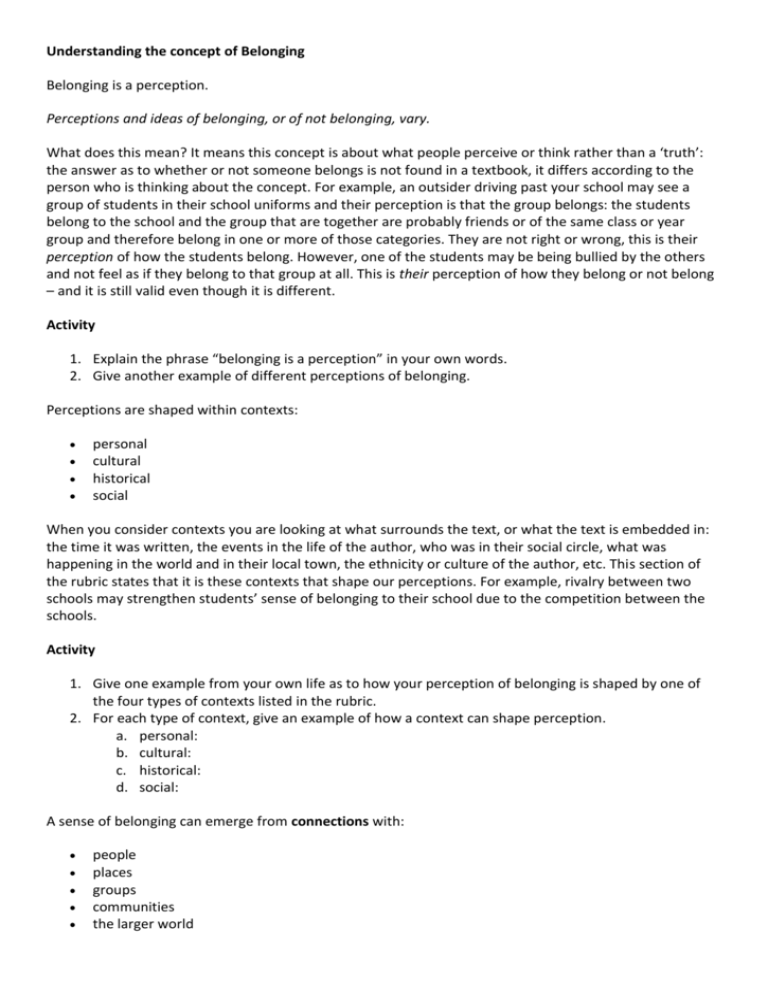
Understanding the concept of Belonging Belonging is a perception. Perceptions and ideas of belonging, or of not belonging, vary. What does this mean? It means this concept is about what people perceive or think rather than a ‘truth’: the answer as to whether or not someone belongs is not found in a textbook, it differs according to the person who is thinking about the concept. For example, an outsider driving past your school may see a group of students in their school uniforms and their perception is that the group belongs: the students belong to the school and the group that are together are probably friends or of the same class or year group and therefore belong in one or more of those categories. They are not right or wrong, this is their perception of how the students belong. However, one of the students may be being bullied by the others and not feel as if they belong to that group at all. This is their perception of how they belong or not belong – and it is still valid even though it is different. Activity 1. Explain the phrase “belonging is a perception” in your own words. 2. Give another example of different perceptions of belonging. Perceptions are shaped within contexts: personal cultural historical social When you consider contexts you are looking at what surrounds the text, or what the text is embedded in: the time it was written, the events in the life of the author, who was in their social circle, what was happening in the world and in their local town, the ethnicity or culture of the author, etc. This section of the rubric states that it is these contexts that shape our perceptions. For example, rivalry between two schools may strengthen students’ sense of belonging to their school due to the competition between the schools. Activity 1. Give one example from your own life as to how your perception of belonging is shaped by one of the four types of contexts listed in the rubric. 2. For each type of context, give an example of how a context can shape perception. a. personal: b. cultural: c. historical: d. social: A sense of belonging can emerge from connections with: people places groups communities the larger world Each person has a number of connections in their life: school, home, work, sport, performing arts, family, friends, local town, region, country, etc. This section of the rubric suggests that our sense of belonging can come from these connections. Activity 1. For each of the categories stated in the rubric, explain how they affect your own sense of belonging: a. people: b. places: c. groups: d. communities: e. the larger world: How do texts explore belonging? Texts explore many aspects of belonging. Texts explore the potential of the individual to enrich a community or group Texts explore the potential of the individual to challenge a community or group In this section of the rubric we are investigating how texts can explore the concept of belonging, looking at how individuals can enrich or challenge a community or group. For an individual to enrich a group they will add value to it, make a difference to the people involved and make the group richer or better off for their involvement. When an individual challenges a group, it can be by the ways they do not fit in with the others, or upset the norm or make the group adjust, adapt and grow in order to accommodate the ‘different’ individual. Activity 1. Write a one-page narrative, depicting how an individual either enriches or challenges a community or group.
